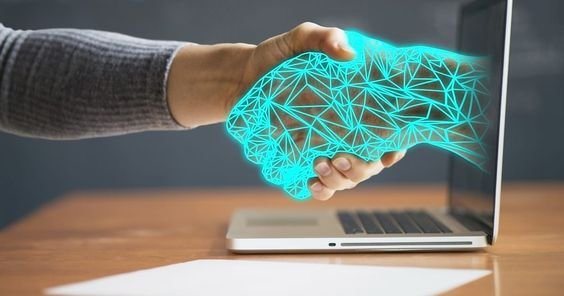
Quantum computing is on the verge of revolutionizing many fields, from material science to artificial intelligence. However, one of the areas where its impact will be most profound is data security. While quantum computing holds the potential to solve complex problems that are currently beyond the reach of classical computers, it also poses significant challenges to the security systems that protect our data today. This article explores how quantum computing will impact data security, the threats it presents, and the steps that can be taken to mitigate these risks.
1. Understanding Quantum Computing
A. What is Quantum Computing? Quantum computing is a type of computation that harnesses the principles of quantum mechanics to process information in ways that classical computers cannot. While classical computers use bits to represent data as 0s or 1s, quantum computers use quantum bits, or qubits, which can represent 0, 1, or both simultaneously due to a property known as superposition. Additionally, quantum entanglement allows qubits that are entangled to be correlated with each other, even when separated by large distances.
B. Why Quantum Computing is Powerful: The ability of qubits to exist in multiple states simultaneously and to be entangled with each other enables quantum computers to perform many calculations at once. This parallelism allows quantum computers to solve certain types of problems exponentially faster than classical computers, such as factoring large numbers, simulating molecular structures, and optimizing complex systems.
2. The Threat to Current Cryptography
A. Vulnerability of Public-Key Cryptography: One of the most significant threats posed by quantum computing is to public-key cryptography, which underpins much of the security infrastructure used on the internet today. Public-key cryptosystems, such as RSA and ECC (Elliptic Curve Cryptography), rely on the difficulty of certain mathematical problems, like factoring large prime numbers or solving discrete logarithms, to secure data.
- Shor’s Algorithm: Quantum computing threatens these cryptosystems because of Shor’s algorithm, a quantum algorithm that can efficiently factor large numbers and compute discrete logarithms. If a sufficiently powerful quantum computer were built, it could break RSA and ECC encryption, rendering them insecure and exposing sensitive data to potential theft or tampering.
B. Implications for Data Security: The ability to break public-key encryption would have far-reaching implications for data security:
- Secure Communications: Most secure communications protocols, including HTTPS, VPNs, and encrypted emails, rely on public-key cryptography. Quantum computers could potentially decrypt these communications, exposing confidential information.
- Digital Signatures: Public-key cryptography is also used in digital signatures, which verify the authenticity and integrity of digital documents and transactions. Quantum computers could forge digital signatures, leading to fraudulent activities.
- Blockchain Security: Blockchain technologies, such as Bitcoin and Ethereum, rely on cryptographic techniques to secure transactions. Quantum computing could undermine the security of these systems, potentially leading to double-spending attacks or the unauthorized transfer of assets.
3. The Advent of Post-Quantum Cryptography
A. Developing Quantum-Resistant Algorithms: To counter the threat posed by quantum computing, researchers are developing quantum-resistant or post-quantum cryptographic algorithms. These algorithms are designed to be secure against attacks by both classical and quantum computers. The goal is to replace existing cryptosystems with ones that can withstand the capabilities of quantum computing.
- Lattice-Based Cryptography: One promising approach is lattice-based cryptography, which relies on the hardness of certain lattice problems that are believed to be resistant to quantum attacks.
- Hash-Based Cryptography: Another approach involves hash-based cryptography, which uses cryptographic hash functions to create secure signatures that are quantum-resistant.
- Code-Based Cryptography: Code-based cryptography, which relies on the difficulty of decoding random linear codes, is another candidate for post-quantum cryptography.
B. Standardization Efforts: The National Institute of Standards and Technology (NIST) is leading efforts to standardize post-quantum cryptographic algorithms. NIST’s Post-Quantum Cryptography Standardization project is evaluating various algorithms with the aim of selecting and standardizing those that can replace existing cryptosystems. The final selection of quantum-resistant algorithms is expected in the near future, which will guide the implementation of quantum-safe security measures across industries.
4. The Need for Quantum Key Distribution (QKD)
A. What is Quantum Key Distribution? Quantum Key Distribution (QKD) is a quantum cryptographic technique that uses the principles of quantum mechanics to securely distribute cryptographic keys between parties. Unlike classical key distribution methods, QKD is inherently secure against eavesdropping due to the quantum property of measurement disturbance, which ensures that any attempt to intercept the key will alter the quantum state and be detected.
B. Applications of QKD: QKD is already being deployed in some high-security environments, such as government and military communications. In a post-quantum world, QKD could become an essential component of secure communication systems, ensuring that cryptographic keys remain safe from quantum attacks.
C. Challenges and Limitations: Despite its promise, QKD faces several challenges:
- Distance Limitations: QKD systems are currently limited by the distance over which they can securely transmit keys, typically up to a few hundred kilometers. Overcoming this limitation requires the development of quantum repeaters or satellite-based QKD.
- Cost and Scalability: The implementation of QKD requires specialized hardware, such as quantum random number generators and photon detectors, which can be expensive. Scaling QKD for widespread use across the internet poses significant challenges.
5. Preparing for the Quantum Future
A. Transitioning to Quantum-Safe Cryptography: Organizations need to begin planning for the transition to quantum-safe cryptography. This involves:
- Inventory of Cryptographic Assets: Identifying all cryptographic assets within the organization, including data encryption, secure communications, and digital signatures.
- Assessment of Vulnerabilities: Assessing which cryptosystems are vulnerable to quantum attacks and prioritizing those that need to be replaced with quantum-resistant alternatives.
- Implementation of Post-Quantum Cryptography: As post-quantum cryptographic algorithms are standardized, organizations should start implementing them in their systems and applications.
B. Hybrid Approaches: During the transition period, hybrid cryptographic systems that combine classical and post-quantum cryptography can be used. These systems provide an added layer of security by ensuring that even if one cryptosystem is compromised, the other remains secure.
C. Collaboration and Research: Ongoing research and collaboration between governments, academia, and the private sector are essential to staying ahead of the quantum threat. Organizations should engage with industry groups, participate in standardization efforts, and stay informed about the latest developments in quantum computing and cryptography.
6. The Long-Term Outlook
A. Quantum Cryptography Beyond QKD: Beyond QKD, quantum cryptography could offer new methods for secure communication and data protection. Research into quantum-secure authentication, quantum secret sharing, and quantum secure multi-party computation is ongoing, with the potential to create entirely new security paradigms.
B. Quantum-Safe Blockchains: The development of quantum-safe blockchains will be crucial for the future of decentralized finance and digital assets. Researchers are exploring ways to integrate quantum-resistant cryptographic techniques into blockchain protocols to ensure their continued security in a quantum world.
C. The Role of Quantum Computing in Cybersecurity: Interestingly, quantum computing itself could play a role in enhancing cybersecurity. Quantum algorithms could be used to detect cyber threats, optimize security protocols, and analyze large datasets for vulnerabilities. The dual nature of quantum computing—as both a threat and a tool—highlights the need for a balanced approach to its development and deployment.
Conclusion
Quantum computing represents both a significant challenge and a tremendous opportunity for data security. While it threatens to break many of the cryptographic systems that protect our data today, it also drives the development of new quantum-resistant technologies that could secure our information in the future. As we approach the era of quantum computing, it is essential for organizations, governments, and individuals to prepare by transitioning to quantum-safe cryptography, investing in quantum key distribution, and staying informed about the latest developments in the field.
The race is on to ensure that when quantum computers become a reality, our data remains secure in a quantum world. By taking proactive steps now, we can mitigate the risks and harness the potential of quantum computing to create a more secure and resilient digital landscape.







